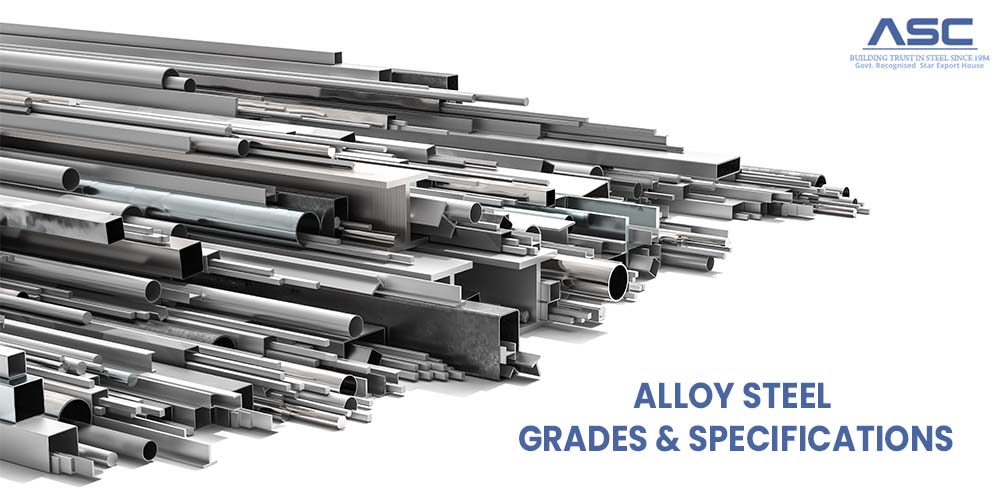The Compelling History of COR-TEN and Weathering Steel
by AMC
Posted on April 14, 2023 at 12:10 PM
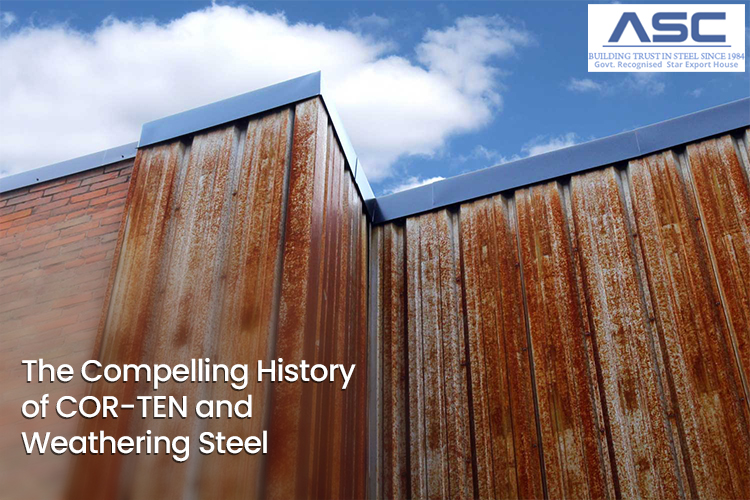
COR-TEN: The origins of weathering steel
During the 1930s, the US Steel Corporation developed weathering steels with the aim of creating a stronger and more durable steel alloy for their hopper carts, which were used to transport iron ore and coal to the furnace. They required a steel alloy that was exceptionally hard and didn't require painting. However, it wasn't until later that they discovered the unique corrosion-resistant properties of this alloy, which could be used in other industries. As a result, they trademarked this alloy under the name COR-TEN® which is derived from "corrosion resistance" and "tensile strength." While Corten and COR-TEN are used interchangeably, COR-TEN® is a product trademarked by US Steel. Although weathering steel was developed in the 1930s, it was not originally intended for architectural use. It was only in the 1950s that architects and designers began to appreciate its unique aesthetic qualities. One of the earliest examples of weathering steel being used as a cladding material was the John Deere Headquarters in Moline, Illinois, which opened in 1964. The complex was designed by Eero Saarinen, who unfortunately passed away before the building was completed. Despite this, the John Deere Headquarters remains a significant example of weathering steel's use in architecture. Eero Saarinen specifically selected the weathering steel, Corten, for its ability to age naturally and achieve the desired earthy hues, in line with his client's preferences. The architect was aware that the steel would weather over time, forming a thickened oxide layer and developing a natural, deep tone. This surface oxide layer displays a stable and long-lasting brownish-red color, which further enhances the steel's durability and resilience. Several artists have integrated weathering steel into their artwork, with Richard Serra being one of the most prominent examples. Serra has utilized weathering steel plates to create several large-scale sculptures that can be found in different parts of the world.
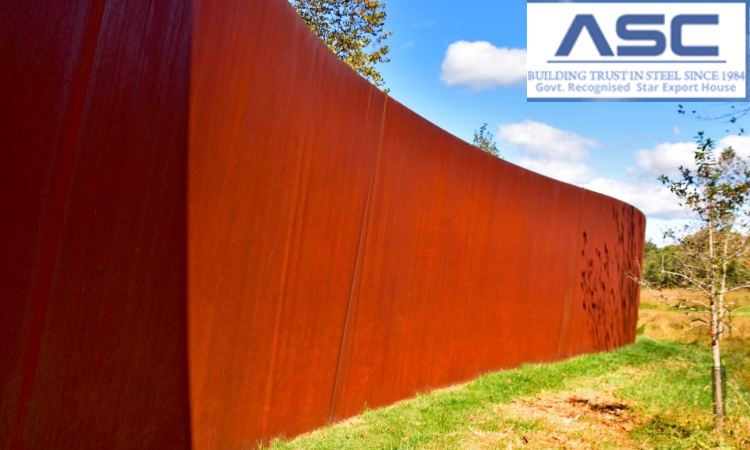
Donald Judd, a renowned minimalist artist, also incorporated weathering steel in his artwork. Judd's approach
involved pre-weathering large steel plates and subsequently allowing them to continue oxidizing outdoors in
Marfa, Texas. Additionally, he designed smaller weathering steel wall units where he worked on the surface
oxide to achieve a delicate, velvet-like texture.
Weathering steel is proving to be an attractive option for designers and artists, thanks to its malleability,
weldability, and the availability of appealing surface finishes. As a result, this material is now being
viewed with renewed appreciation and providing fresh inspiration to creatives.
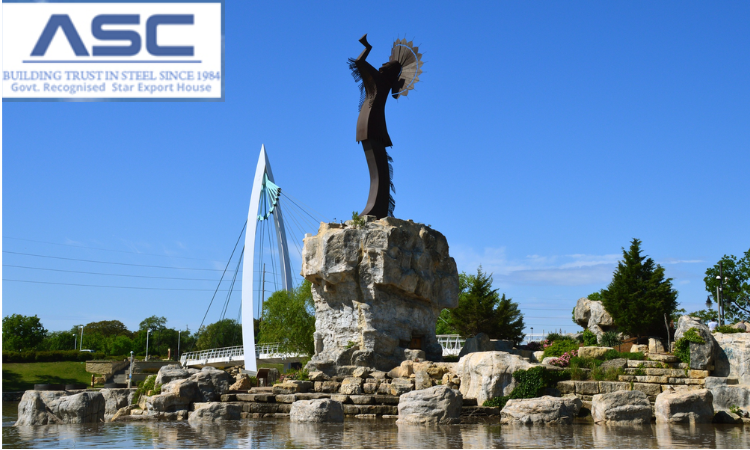
THE KEEPER OF THE PLAINS IS A 44 FT CORTEN STEEL SCULPTURE BY KIOWA-COMANCHE ARTIST BLACKBEAR BOSIN THAT STANDS AT THE CONFLUENCE OF THE ARKANSAS AND LITTLE ARKANSAS RIVERS IN WICHITA, KANSAS.
What is weathering steel?
In the fields of art and architecture, it is unusual to find uncoated steel due to its propensity to absorb
moisture and form a fragile, porous oxide layer commonly referred to as rust. To prevent this, coatings are
typically applied to steel surfaces. One method is the use of sacrificial coatings such as zinc, as seen in
the galvanizing process where steel is electroplated or submerged in molten zinc. Another option is to use
aluminum-zinc coatings or Galfan™, which is a blend of zinc and rare earth metals. These sacrificial coatings
protect the underlying steel by sacrificing their own electrons and acting as a barrier layer.
Apart from the pre-weathering rust effects, there are also methods to achieve a blue or black protective
coating on steel, such as Oscura blackened steel. These treatments involve the application of metal salts onto
the steel surface, with some diffusion of the iron into the coatings creating dark sulfide, phosphate, or
selenide salts. While not as effective as the sacrificial zinc coating in the galvanizing process, these
coatings are often used on smaller features, pieces, and areas.
Weathering steel, which contains copper, develops a unique oxide layer on its surface that serves as a
protective barrier. This oxide layer grows both inward and outward from the surface and is significantly
thicker and more impermeable than typical rust. As a result, it provides the underlying steel with remarkable
resistance to corrosion. Below are some of the most prevalent coatings used in art and architecture to enhance
the aesthetic appeal and durability of steel surfaces.
SURFACE COATINGS ON STEEL USED IN ART AND ARCHITECTURE
- Coated with other metals: zinc, zinc-aluminum, chrome plate
- Metal oxides: blackening, bluing, and phosphate treatments
- Coated with paints: organic paints, polyesters, acrylics, fluorocarbons
- Coated with glass: porcelain
- Oxide: weathering steel
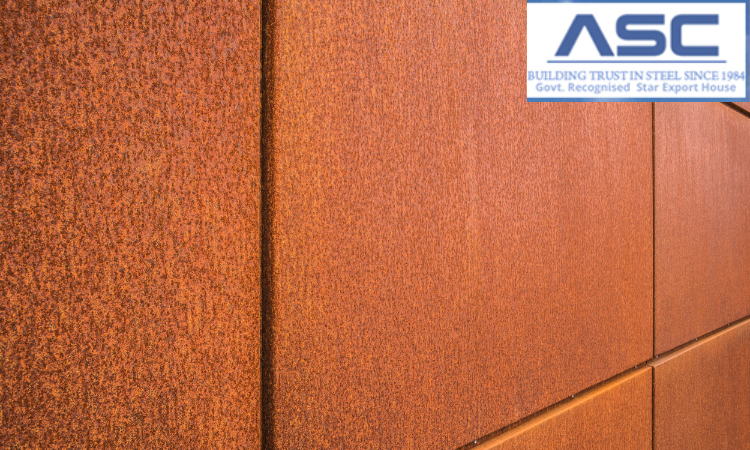
Protective Oxides and Applications of Weathering Steels
Weathering steels that possess high-strength and low-alloy characteristics are engineered to produce a unique
and thick layer of iron oxide that effectively retards the progress of atmospheric corrosion. This layer
functions similarly to the green patina that emerges on copper surfaces that have been exposed to the
elements. The iron oxide coating thickens as the steel is exposed to air and moisture.
The unique protective property of weathering steel is due to the ferric oxyhydroxide oxide that forms on its
surface when exposed to oxygen and moisture. This oxide is a mixture of oxides and hydroxide and appears in an
attractive orange to rich purple brown color. This oxide acts as a barrier to protect the underlying metal.
When formed correctly, this tough oxide layer creates a surface that can withstand outdoor environments,
preventing atmospheric degradation. The development of this oxide layer is a slow process and further changes
are usually minimal in most environmental exposures.
The composition
of weathering steel includes alloying elements such as copper, phosphorus, chromium, and
nickel. The presence of copper, combined with chromium, affects the formation of oxide at the surface. In the
initial stage, the oxide layer forms quickly within a few days or weeks, and the formation rate depends on the
level of moisture and temperature. The development of this initial layer is highly influenced by these
factors. In dry climates like deserts, the process may take several months or even years to occur, if it
happens at all.
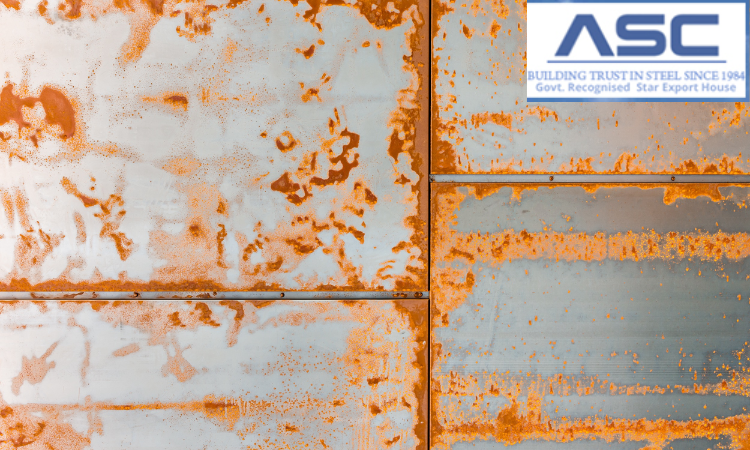
To form the protective oxide layer, a chemical reaction takes place on the surface of weathering steel as
iron and oxygen atoms collide. The frequency of these collisions determines the speed of the reaction, with a
higher number of collisions leading to a faster reaction. The temperature of the steel's surface also affects
the frequency of these collisions, with higher temperatures resulting in more collisions and a faster
reaction. This thermodynamic reaction is referred to as activation energy, with higher surface temperatures
resulting in greater energy.
The creation of iron oxide requires a minimum surface temperature of 10°C (50°F) and moisture with oxygen. The
iron atoms combine with oxygen to form a solution. If the surface temperature is too high, the moisture
evaporates too quickly to combine with the oxygen and form ferrous ions. However, if the temperature is within
the correct range and moisture is present, the oxide forms rapidly. The thick and robust oxide layer develops
as the surface undergoes cycles of wetting and drying.
Initially, a thin layer of ferric oxide is formed, which is fragile and permeable to the surface. It can
easily rub off onto hands or clothing.
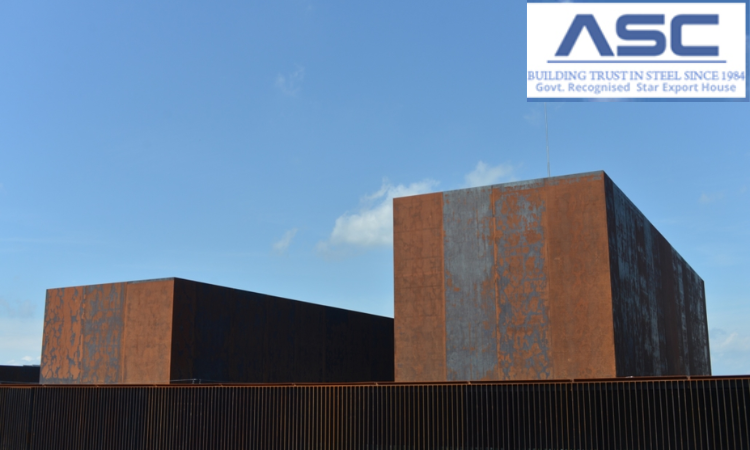
DIFFERENT RATES OF WEATHERING OCCUR WITH CORTEN STEEL, AS SEEN ON THE FACADE OF THE MUSÉE SOULAGES IN RODEZ, FRANCE.
If the environment is suitable, the soft, friable layer of oxide will cover the entire surface within a short time. This layer is similar to velvet in the sense that brushing it leaves a mark on the surface. The initial layer of ferric oxide is responsible for the rust stain that appears beneath weathering steel surfaces that are allowed to develop the oxide naturally. As the oxide layer develops, it initially adheres loosely and falls off as moisture drips down the surface, collecting the particles and redepositing them on adjacent materials. Weathering steels have a natural, earthy appearance due to their rich color tone. When the oxidation process takes place, weathering steel acquires a very pleasing, natural look that is similar to brick, wood, or patina copper.
A Look at the Art and Science of Pre Weathering
The appeal of weathering steel continues to grow among designers, but preventing rust and controlling its
decay is crucial for successful and durable applications of this material.
Amardeep Steel has been working with Corten
steel for nearly as long as it has been around. However, the
amount of time it takes for the deep colors to appear was a major aesthetic drawback. Waiting for the building
to corrode and stain the surrounding stonework and sidewalks was not desirable.
Pre-weathering the steel seemed to be the solution, but it was hazardous and impractical for large projects.
Many artists resorted to using acids and wetting the surface to achieve pre-weathering on their sculptures.
If you're interested in utilizing weathering or pre weathered steel in your upcoming project, don't hesitate
to reach out to us. Contact us today to request
samples or speak to one of our Project Specialists.
.jpg)
Alloy Steel vs. Stainless Steel
Alloy steel is a type of steel that is made by combining two or more different metals or elements to improve its properties.
